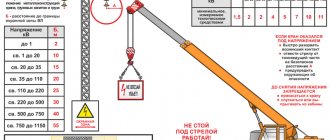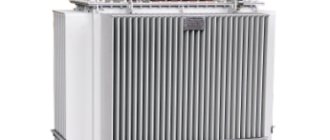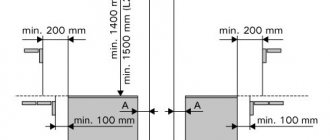Grounding
To protect against electric shock, grounding is used. It is organized in any room where electrical equipment is used.
A metal structure (ground electrode) is buried in the ground, to which a grounding electrode is connected. It connects the ground electrode and electrical equipment located in the room into a single circuit.
Grounding device for home
If there is no grounding in the house, then if the wire is damaged, the metal part of the equipment body will be energized and a person touching it may be shocked. If there is grounding, then in this case the current will go into the ground and will not pose a danger to humans.
Characteristics of current paths
Depending on the path of the current, the severity of the injury to the victim is determined, since the current affects all organs and tissues along the path of its movement.
The most dangerous thing is if the current passes through the heart, head or respiratory organs.
Paths of current passing through a person
The most dangerous schemes:
- hand - hand;
- two arms - two legs;
- hand leg.
Least dangerous route: leg to leg.
Also an important factor is the time of exposure to the damaging factor. The smaller it is, the less damage will be caused to the body, since even a weak current with prolonged exposure leads to severe electrical injuries.
A person can be injured without even touching exposed wires. This can happen when approaching live parts at a dangerous distance. When you are near broken power line wires lying on the ground, step voltage occurs. It is called this because it takes into account the potential difference between two points located at a distance of a human step from each other. The wider a person takes a step, the more likely a defeat is, since in this case the potential difference is higher.
When organizing electrical wiring, according to the Electrical Safety Rules, it is mandatory to provide options for automatic protection against electric shock.
These include different grounding options, the use of lower voltages, emergency shutdown systems, etc.
What important points for the safety engineer are contained in the new ones, with changes in POTEU 2020 and PTEEP
Key points important for an electrical safety engineer:
- The appointment of the person responsible for electrical equipment and his deputy is carried out on the basis of paragraphs. 1.2.3–1.2.5 PTEEP. The responsibilities of the person responsible for electrical equipment are specified in clause 1.2.6 of the PTEEP.
- An occupational safety engineer cannot be responsible for electrical facilities, since he is an inspecting person, and not electrical or electrical engineering personnel. Therefore, if there is no safety engineer on staff, his responsibilities cannot be assigned to the person who is already responsible for electrical equipment. It turns out that this person will have to check his own work, which is wrong. But responsibility for ensuring labor protection and fire safety in the department can be assigned to the person responsible for electrical equipment.
- Rules for labor protection during the operation of electrical installations are applied in all organizations that use electrical installations, electrical equipment, and power tools. Therefore, even if your organization uses only lighting fixtures, a computer and a kettle, you will still have to study in POTEU.
- Which electrical safety group which specialist needs to have is specified in Appendix 1 to the new POTEU as amended for 2020. The procedure for assigning these groups is also specified here. For example, to be assigned the 4th group, an occupational safety engineer, in addition to successfully passing exams and receiving the 3rd group, must have 3 or more years of production experience.
- Good knowledge of the requirements of POTEU and PTEEP by an OT engineer reduces the company's costs. For example, a contractor whose employees are trained in electrical safety group 2 should repair an excavator. This is an active electrical installation, so to carry out repairs, workers need to have electrical safety groups 3 and 4. However, if you make this electrical installation inoperative for the period of repair (disconnect the power cable, ground it, fill out the appropriate documentation), the 2nd electrical safety group will be enough to carry out the repair, and you will not have to spend money on additional training.
- The maximum electrical safety group that is allowed to be assigned to persons under 18 years of age is 2nd. The same group is assigned to practical students and interns. It is prohibited to include such workers in existing teams. The maximum that they can do as an exception is to act as a security post without entering a working electrical installation.
- The enterprise commission can confirm the electrical safety group and assign a new one. At the same time, she is allowed to confirm or assign a group no higher than the one that 3 members of the commission have. For example, if in the knowledge testing commission 3 people are trained in the 3rd group, they cannot assign and confirm the 4th group. Members of the commission must undergo training and knowledge testing at a specialized center or at Rostechnadzor.
- PTEEP and new POTEU as amended for 2022 allow workers who do not work with portable power tools or in electrical installations to be classified as non-electrical personnel. Such employees must be assigned group 1 annually. Instructions for the 1st group are carried out by the person responsible for electrical equipment or, on his orders, by another employee trained at least for the 3rd group from among the electrical personnel. The results of the briefing are recorded in a special journal. The safety engineer cannot conduct instructions for the 1st electrical safety group, since he is not electrical personnel.
- If the consumer’s manager has delegated the technical management of the electrical installations at his disposal to a responsible person, he himself may not be trained in electrical safety for group 2 or higher. It will be enough for him to undergo instruction for the 1st group.
- The standard timing for testing knowledge in POTEU, PTEEP for an occupational safety engineer is once every 3 years, for electrical personnel who maintain, repair, set up electrical installations, and issues orders for these works - once a year, for administrative and technical personnel who does not engage in previously specified work - once every 3 years. Moreover, before testing knowledge, the worker must undergo a medical examination and have no medical contraindications to perform the relevant work.
04. Occupational safety during work in existing electrical installations.
Home → Order on approval of labor safety rules during the operation of electrical installations dated July 24, 2013 N328н → 04. Occupational safety during work in existing electrical installations.
4.1. Work in existing electrical installations must be carried out:
- according to the assignment for the production of work, drawn up on a special form of the established form and defining the content, place of work, time of its beginning and end, conditions for safe performance, composition of the team and workers responsible for the safe performance of work (hereinafter referred to as the work permit, work order), form which and instructions for filling it out are provided in Appendix No. 7 to the Rules;
- by order;
- based on the list of works performed in the order of current operation.
4.2. Unauthorized work in existing electrical installations is not allowed, as well as expansion of jobs and the scope of the task determined by the work order, order or list of work approved by the employer, performed in the course of routine operation.
4.3. Carrying out work at the work site under a different order must be agreed upon with the employee who issued the first order (responsible manager or work performer). Approval is issued before the start of preparing the workplace for the second work order with the entry “Approved” on the front side of the second work order, located in the lower left field of the document with the signatures of the workers approving the document.
4.4. Major repairs of electrical equipment with voltages above 1000 V, work on live parts without removing the voltage in electrical installations with voltages above 1000 V, as well as repairs of overhead lines regardless of voltage, must be carried out according to technological maps or a work project (hereinafter referred to as the work plan), approved by the head of the organization. Work on induced voltage lines (disconnected overhead lines, overhead communication lines (hereinafter referred to as VLS), on power transmission lines consisting of overhead and cable sections connected to each other (hereinafter referred to as ACL), which run along the entire length of the line or in certain areas near overhead lines with a voltage of 6 kV and higher or near the contact network of an electrified AC railway that are under operating voltage, on the wires (cables) of which, with different grounding schemes (as well as in the absence of grounding), at the highest operating current of the influencing overhead lines, voltage more than 25 V, as well as all overhead lines built on double-circuit (multi-circuit) supports with at least one circuit with a voltage of 6 kV and higher turned on (hereinafter referred to as overhead lines under induced voltage) are carried out according to the work permit for the work being performed.
4.5. In electrical installations with voltages up to 1000 V, when working under voltage, it is necessary to:
- relieve voltage from other live parts located near the workplace that are energized, which may be accidentally touched, or protect them;
- work in dielectric galoshes or standing on an insulating stand or on a rubber dielectric carpet;
- use an insulated tool (screwdrivers must have an insulated shaft) or use dielectric gloves.
It is not allowed to work in clothes with short or rolled up sleeves, or to use hacksaws, files, or metal meters.
4.6. It is not allowed to work in electrical installations in a bent position if, when straightened, the distance to live parts is less than the distance specified in Table No. 1.
When working near unprotected live parts, it is not allowed to be positioned so that these parts are behind the worker or on both sides of him.
4.7. It is not allowed to touch insulators or insulating parts of live equipment without using electrical protective equipment.
4.8. In crossing spans in outdoor switchgear and on overhead lines, when replacing wires (cables) and related insulators and fittings located below live wires, ropes made of vegetable or synthetic fibers. The ropes should be thrown in two places - on both sides of the intersection, securing their ends to anchors and structures. Lifting the wire (cable) should be done slowly and smoothly.
4.9. Work in the outdoor switchgear on wires (cables) and related insulators, fittings, located above wires, and energized cables must be carried out in accordance with the PPR approved by the head of the organization or separate unit. The PPR must provide measures to prevent the lowering of wires (cables) and to protect against induced voltage. It is not allowed to replace wires (cables) during this work without removing the voltage from the crossed wires.
4.10. Workers should remember that after the voltage at the electrical installation has disappeared, it can be reapplied without warning.
4.11. Work in unlit places is not allowed. The illumination of work areas, workplaces, passages and approaches to them must be uniform, without the glare of lighting devices on workers.
4.12. When a thunderstorm approaches, all work must be stopped on overhead lines, overhead lines, outdoor switchgear, on inputs and switching devices of indoor switchgear directly connected to overhead lines, on lines for transmitting electricity or individual pulses of it, consisting of one or more parallel cables with connecting, stop and end cables. couplings (seals) and fasteners, and for oil-filled cable lines, in addition, with feeders and an oil pressure alarm system (hereinafter referred to as CL) connected to overhead line sections, as well as at overhead line inputs in the premises of communication centers and antenna mast structures .
4.13. Workers working in rooms with electrical equipment (except for control panels, relay rooms and the like), in closed switchgear and open switchgear, in underground structures, wells, tunnels, trenches and pits, as well as those involved in the maintenance and repair of overhead lines, must use protective helmets.
4.14. On overhead lines, regardless of the voltage class, it is allowed to move workers along wires with a cross-section of at least 240 square meters. mm and along cables with a cross-section of at least 70 sq. mm, provided that the wires and cables are in good technical condition and have no damage caused by vibration or corrosion. When moving along split wires and cables, the lanyard of the safety belt should be secured to them, and if a special cart is used, to the cart.
4.15. Maintenance of lighting devices located on the ceiling of machine rooms and workshops from the overhead crane trolley must be carried out by at least two workers, one of whom must have group III and perform the corresponding work. The second worker must be close to the worker and monitor his compliance with the necessary safety measures.
The installation of temporary scaffolding and ladders on an overhead crane trolley is not allowed. Work should be done directly from the trolley deck or from stationary scaffolds installed on the deck.
The trolley wires must be de-energized before being lifted onto the overhead crane trolley. When working, you should follow labor safety rules when working at height.
The crane operator must move the bridge or trolley of the overhead crane only at the command of the work foreman. When moving an overhead crane, workers must be positioned in the overhead crane cabin or on the bridge deck. When workers are on the overhead crane trolley, movement of the bridge and trolley is prohibited.
4.16. When carrying out excavation work, it is necessary to comply with the requirements of building codes and regulations.
Return to Order
Where do safety regulations apply?
The provisions of the labor protection rules concern, first of all, electrical, electrical and technological workers and some non-electrical workers who come into contact with different parts of electrical equipment during its maintenance, switching, installation and commissioning and other (including construction) types of work. Also subject to the rules are their employers: legal entities and individuals; they are obliged to guarantee safe work at their enterprises.
Note! In order to increase production reliability, employers can establish even more stringent requirements for electrical safety (of course, not in opposition to the official Rules). Workers must be familiar with the instructions on their labor protection and properly instructed
Electrical installations and lines involved in production, transmission and distribution processes must be in good working order and equipped with various protective devices and first aid.
Means of protection against electric shock
All members of the production process involving electrical energy must periodically undergo training and confirm their ability to work electrically safely (access groups I to V are assigned and standard certificates are issued), and some categories of persons must also undergo medical examinations (if workers are under 21 years old, annual) . If these rules are violated, the perpetrators bear various types of liability.
Requirements for the security of electrical installations
Chapter III of POTEE clarifies that workers who do not service electrical installations can only be in them for inspection. Operating personnel receive keys only to the premises and devices where they intend to work. Thus, the author of the Rules established that neither a leadership position nor an electrical safety group gives a specialist the right to freely walk around the territory of power facilities.
The owner of electrical installations must keep a log of the issuance and return of keys, in any form, which must contain the signatures of the employee who issued the keys and the person who received them.
IV. First aid methods
4.1.1. Lay the victim on his back on a hard surface;
4.1.2. Check if the victim is breathing (by raising the chest or in another way);
4.1.3. Check the victim for the presence of a pulse in the radial artery at the wrist or in the carotid artery on the anterior - lateral surface of the neck;
4.1.4. Find out the condition of the pupil (narrow or wide); a wide pupil indicates a sharp deterioration in blood supply to the brain.
4.2. In all cases of electric shock, calling a doctor is mandatory, regardless of the condition of the victim.
If the victim is unable to breathe, artificial respiration should be started immediately. The most effective method of artificial respiration is “mouth to mouth”.
With this method, the person providing assistance places the victim in such a way that his head is thrown back as far as possible, while the tongue should not block the passage of air through the larynx. Then the person providing assistance takes several strong breaths and blows air through the mouth into the victim’s lungs at a rate of 10-12 exhalations per minute (every 5-6 seconds) until the victim’s breathing is completely restored or a doctor arrives.
4.3. If the victim has no breathing or pulse, it is necessary to carry out external (indirect) cardiac massage simultaneously with artificial respiration (air injection). To do this, determine the location of the lower third of the sternum, then place the base of the palm of an open hand on it, place the palm of the other hand on top of the first and begin rhythmic pressure on the victim’s chest. In this case, these operations should be alternated in the following order: after two blows into the victim’s mouth or nose, the person providing assistance applies 15 pressures on the chest (each pressure for 0.5 seconds), after which artificial respiration and chest compressions are repeated in the specified sequence. Artificial respiration should be performed until the victim shows signs of spontaneous breathing or until a doctor arrives.
4.4. If the victim's clothing catches fire, you need to quickly throw some thick fabric over him or knock out the flames with water.
In case of burns, you should not touch the burned area of skin with your hands or lubricate it with any ointments, oils, petroleum jelly or solutions. Do not open blisters or remove burnt pieces of clothing that have stuck to the wound. The burned surface should be covered, like any wound, with sterile material from an individual bag.
4.5
For minor bruises, a cold compress should be applied to the bruised area; for severe bruises, the victim should be carefully placed on a stretcher, clothes should be unbuttoned and cold compresses should be applied to the bruised area.
4.6. Any wound can become contaminated by microbes found on the wounded object, on the skin of the victim, as well as in dust, soil on the hands of the person providing assistance, and on dirty dressings. Even a very small wound should be protected from contamination; for a small wound, you need to take a bandage from the first aid kit and apply a bandage to the wound (you cannot wash the wound with water); In case of major bleeding, a tourniquet should be applied above the wound.
Electric Shock Hazard
The danger of electric shock occurs not only when working with electricity, but also in everyday life. Employees whose occupation is directly related to electric current are more at risk. Fatalities from electrical injuries, according to statistics, depending on the type of industry, are about 15-30% annually. This mainly happens in case of inattention and accidental contact with live wires.
That is why compliance with safety precautions is very important when working with electric current.
Voltage over 35-40 Volts poses a danger to humans; it can lead to death without timely medical assistance. The degree of damage directly depends on the strength of the current, the design of the electrical network, the power source, contact with a damp environment and a number of other factors. Both direct and alternating current pose a threat.
Electric shock to all systems of the body is life-threatening, which leads to instant cardiac arrest. At the same time, the muscles contract, and the victim cannot independently release the live wire. Therefore, when working, electricians touch the wires with the outer part of their palm, so that in the event of an electric shock they do not grab the live cable, squeezing it even more tightly.
The main causes of electrical injuries at work can be identified:
- working with live cables without complying with safety standards;
- poor-quality grounding of electrical installations;
- lack of fencing for energized equipment;
- carrying out electrical installation work without using protective equipment;
- direct contact with wires where insulation is damaged or missing;
- faulty wiring, which can lead not only to electric shock, but also to fire;
- if “weak” connecting wires are used for high-power equipment that cannot withstand its current strength;
- increased humidity in places where welding work is performed, etc.
The main causes of electric shock to humans
General changes
POTEE as amended by Order 903n reflects the trend in regulatory regulation in recent years: the employer must assess the risks of its activities and decide how much effort to devote to labor protection. The legislator establishes only the minimum necessary safety requirements when working with dangerous and harmful factors.
Chapter I of the Rules establishes the employer's responsibility for ensuring labor safety. The clause that he can transfer it to management employees, for example, the chief engineer or technical director, is excluded. But the employer received additional rights:
- Based on the specifics of the activity and assessment of professional risks, use digital recording devices to control the safety of the production process. In fact, this means that video recordings from work on an electrical installation can be used as evidence of violations by the employee of labor safety rules, if any. Or record the targeted briefing on a voice recorder and then evaluate the correctness of its implementation.
- Independently establish forms of records in the field of labor protection. The forms given in POTEE have the status of “recommended samples”, and the employer can supplement them without reducing the requirements for maintenance and content. This applies to work permits, magazines, and certificates of knowledge testing.
- Maintain electronic document flow in the field of labor protection. Now the employee can be familiarized with the instructions under a personal signature or using an electronic signature. This is convenient for geographically remote workplaces, for example, at substations.
II. Safety requirements before starting work
2.2. Prepare the work area for safe work:
clear aisles, driveways and cargo storage areas from foreign objects;
check the sufficiency of lighting of passages and cargo storage areas.
2.3. Check the serviceability of tools, equipment and accessories.
2.4. Prepare and arrange in order the raw materials necessary for the work.
2.5. To prepare the workplace or when working with stress relief, the following technical measures must be carried out in the specified order:
A). The necessary shutdowns have been made and measures have been taken to prevent the supply of voltage to the work site due to erroneous or spontaneous switching on of switching equipment.
b). Prohibiting posters are posted on drives and remote control keys of switching equipment.
V). The absence of voltage on live parts that must be grounded to protect people from electric shock has been verified.
G). Grounding has been carried out (grounding blades are turned on, and where they are missing, portable grounding connections are installed).
d). Warning and ordering posters are posted, workplaces and remaining live parts are fenced, if necessary.
Depending on local conditions, live parts are shielded before or after grounding.
Repair personnel begin work only after being cleared by the electrical personnel servicing this installation.
2.6. When using hand-held electric machines, portable lamps and portable power tools, before starting work you should: - determine the class of the machine or tool from the passport;
— check the completeness and reliability of fastening parts;
— make sure by external inspection that the cable (cord), its protective tube and plug are in good condition, the integrity of the insulating parts of the housing, the handle and brush holder covers, and protective covers;
— check the operation of the switch;
— perform (if necessary) testing of the residual current device (RCD);
— check the operation of the power tool or machine at idle speed;
— check for class I machines the serviceability of the grounding circuit (machine body - grounding contact of the plug).
OCCUPATIONAL SAFETY REQUIREMENTS AFTER COMPLETION OF WORK
5.1. Remove barriers and prohibition signs. 5.2. Resume the power supply after the equipment is ready for further use. 5.3. Remove tools and unused materials. 5.4. Complete the appropriate electrical installation and electrical equipment documentation. 5.5. Notify the operational (responsible) employee servicing the facility about the completion of work. 5.6. Take off and put in order special clothing and safety shoes. 5.7. Wash your face and hands with warm water and soap, and take a shower if necessary. 5.8. Report all comments and malfunctions that occurred during work to your immediate supervisor.
Line repair
The rules for repairing lines oblige the team to organize grounding within a radius of 20 meters from the work site. Any activity outside this circle is prohibited. If several teams are working on a site, then each must have its own grounding.
Workers can move directly along cables for convenience if they are at least 70 sq. mm. transverse area.
Work on damaged lines
During line repairs it is prohibited:
- Use of traverses during phased repairs.
- Climb onto power transmission poles to inspect the breakdown.
- Move under damaged supports at night.
- Move closer than 8 meters to exposed wires.








